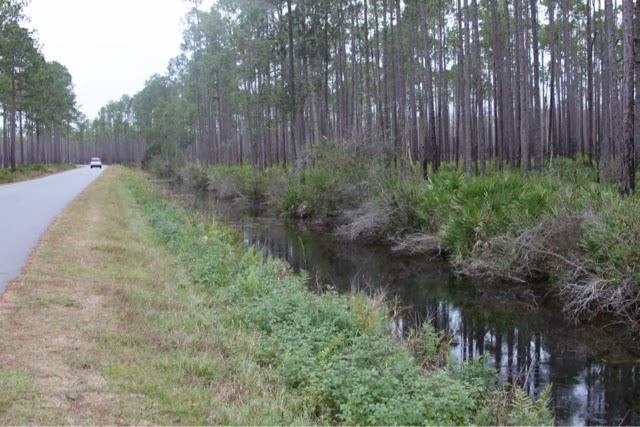The Okefenokee National Wildlife Refuge was established in 1937 and encompasses over 400,000 acres. Okefenokee is a Native American word meaning "land of the trembling earth."
Swamp Boat Tour
Evidence of the April 2011 lightning strike that burned 483 square miles, more than half of the refuge. It is also the longest fire in the 75 year history of the park, it began on April 28, 2011 and was declared out in early April 2012, almost a year!
Area not devastated by wildfire.
Chesser Prairie
Can you find the alligator?
Wood Stork
Hooded Pitcher Plants
A carnivorous plant, one of 3 found in the Okefenokee Swamp. The others are butterworts on land and bladderworts that grow in water.
We saw several signs like this one to help canoeists find their way in the swamp.
Peat moss from the swamp bottom! The peat islands are how the Okefenokee got it's name from Native Americans because they're unstable and tremble when walked on. The peat is 80% decomposing water lily and bald cypress.
Chesser Prairie
Suwannee Canal was dug in 1891 in an attempt to drain the Okefenokee Swamp into the St. Mary River. The goal was to reach the cypress forests for logging and to create farmland. After 12 miles of canal was dug, the company abandoned the project in 1895 due to lack of funds and the unstable sand banks.
Looking down on some bald cypress knees.
Chesser Island Homestead
The Chesser family settled this swamp farm in the mid-1880s on a small island on the eastern edge of the Okefenokee Swamp. They ate what they could trap, shoot, catch and grow on the sandy soil. Cash crops were primarily sugar cane and turpentine. Did you know turpentine is made from pine needles? I didn't!
Families prided themselves in keeping a clean yard, free of grass, for several reasons. The sand yard acted as a fire break, the five venomous snakes of the area were easy to spot on the white sand, and keeping it clear of damp, decaying leaves helped keep insects at bay.
Pioneer swampers erected gourd bird nests to attract the mosquito devouring Purple Martin.
Front porch flower box.
Scott is talking with the Chesser Homestead historian on the front porch. This man was a family friend of the Chessers so he was a wealth of information and a storyteller!
Quilt frame was hung from the porch roof when not in use.
Kitchen area.
The Chesser girls wanted a bathtub so their father put one on the back porch where the afternoon sun could heat the water - it drained out onto the ground! The sink drained into the galvanized bucket sitting on the ground.
The Chessers made and used cypress log wells as their water source. Its use in a well is imperative since the wood is continually wet and without the hollow log, the sandy walls would immediately cave in.
A mule pulled the sweep around the rollers of the grinding mill. An operator would feed two stalks of sugar cane through the rollers in order to squeeze juice from the cane.
Swamp Island Drive
This is an area of Longleaf Pine restoration.
Unlike our pine forests, this forest has fan palm vegetation on the floor.
Tickseed Sunflower









































No comments:
Post a Comment